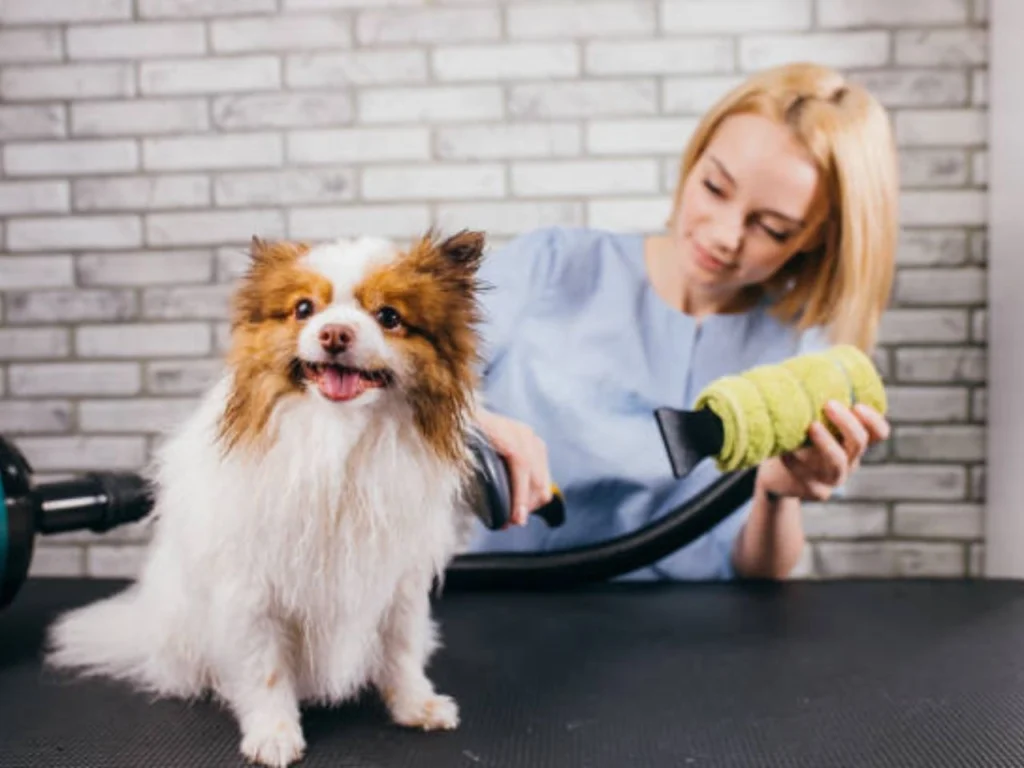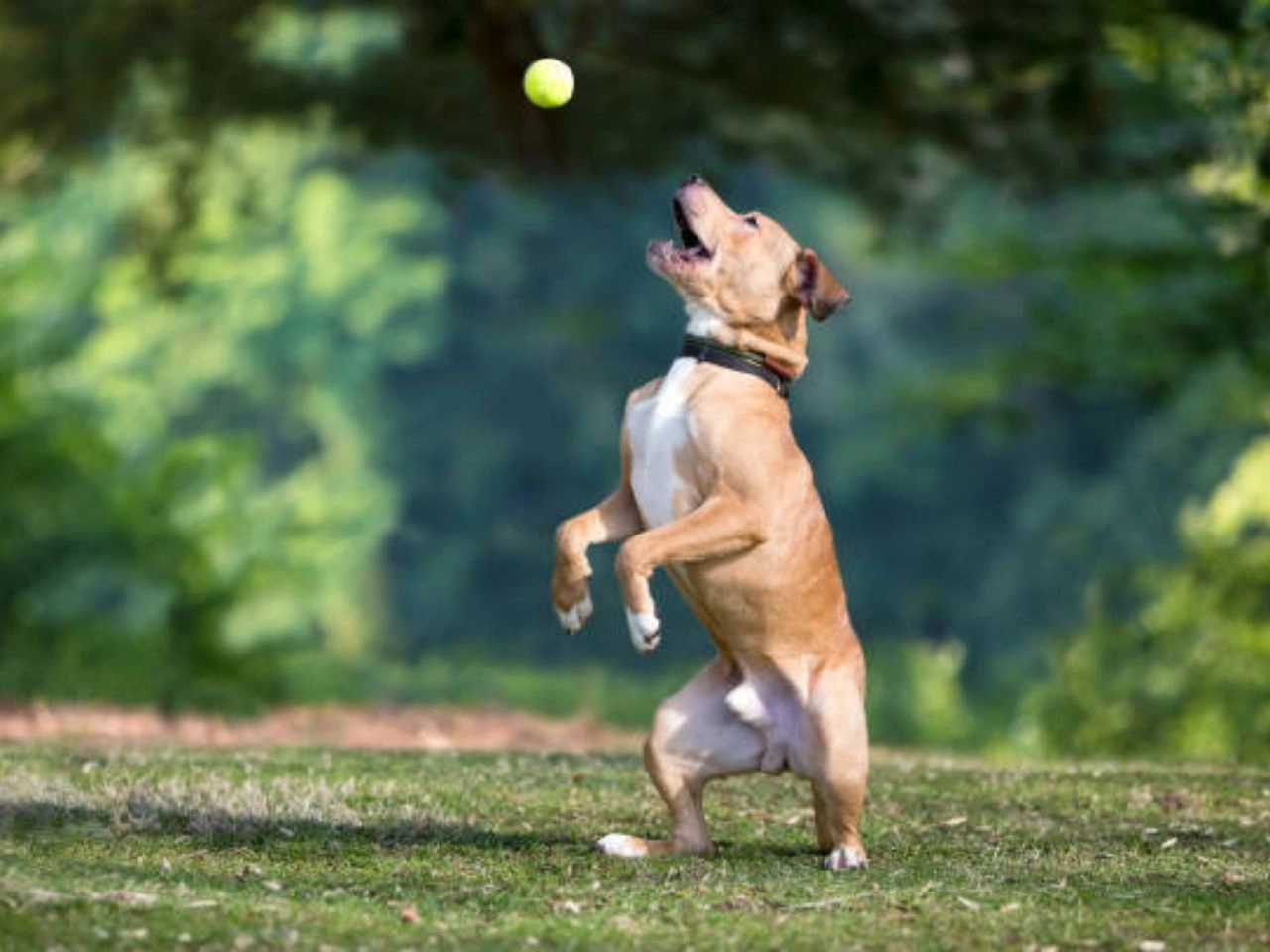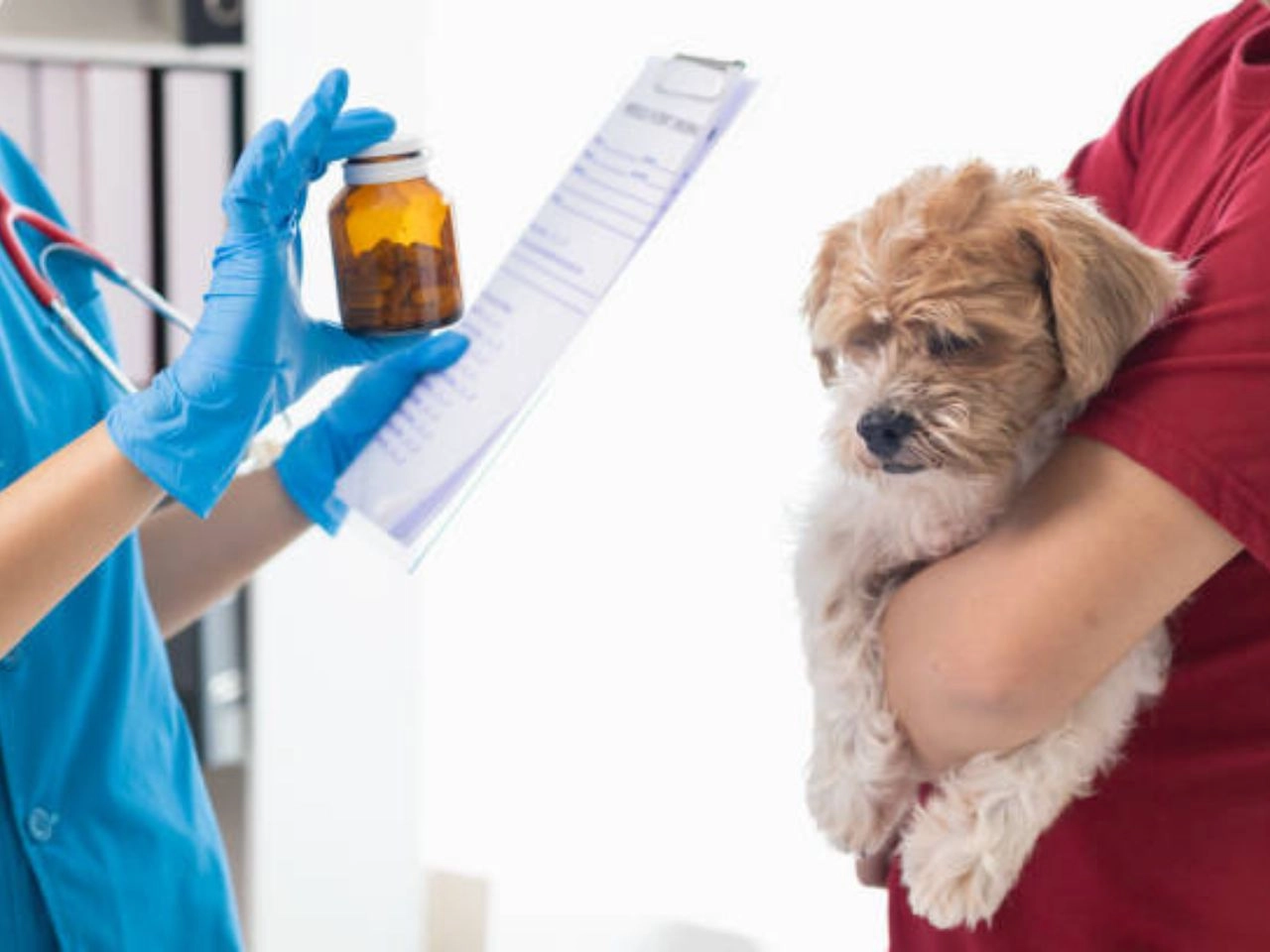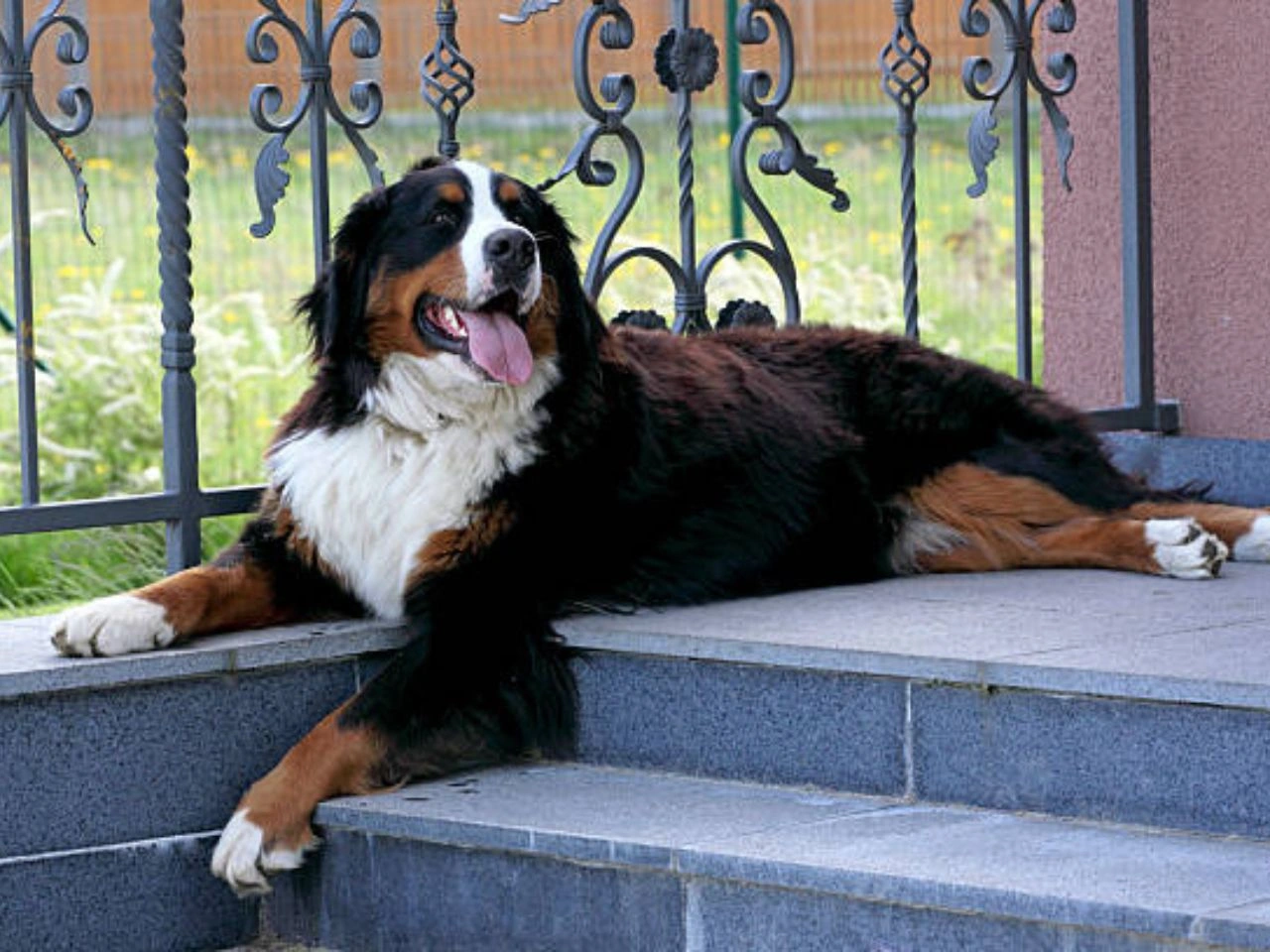To relieve dog itching after grooming, use a soothing oatmeal shampoo and apply a hypoallergenic conditioner. Ensure the grooming tools are clean and gentle. How to Relieve Dog Itching After Grooming.
Dog itching after grooming is a common issue many pet owners face. It can result from skin irritation caused by grooming tools, shampoos, or conditioners. Using the right products and tools can significantly reduce this discomfort. Oatmeal shampoos are excellent for soothing irritated skin, and hypoallergenic conditioners help maintain skin moisture.
Ensure all grooming tools are clean to prevent any infections. Regular brushing and proper grooming techniques also play a crucial role. By taking these steps, you can keep your dog comfortable and itch-free after grooming sessions.
Introduction To Post-grooming Itchiness
Grooming sessions are essential for your dog’s health and cleanliness. Yet, after these sessions, some dogs experience discomfort and itchiness. Understanding why this occurs can help you provide relief for your furry friend. In this guide, we’ll explore the common causes of post-grooming itchiness and how to recognize if your dog is feeling itchy.
Common Causes Of Itching
Several factors can lead to post-grooming itchiness in dogs:
- Dry Skin: Grooming products can strip natural oils, causing dryness and itchiness.
- Allergic Reactions: Dogs might react to shampoos, conditioners, or grooming tools.
- Clipper Burn: Close shaving can irritate the skin, leading to itching.
- Environmental Factors: Pollen, dust, and other allergens can exacerbate itching after grooming.
- Parasites: Fleas and mites might become more noticeable after grooming.
Signs Your Dog Is Uncomfortably Itchy
It’s important to recognize signs that your dog is feeling itchy and uncomfortable:
- Excessive Scratching: Frequent scratching can indicate irritation.
- Chewing or Biting: Dogs might chew or bite at their skin to alleviate itching.
- Redness or Swelling: Look for red or swollen areas on your dog’s skin.
- Restlessness: An itchy dog might seem more restless or agitated.
- Hair Loss: Patches of missing fur can be a sign of severe itching.
By identifying the causes and signs of post-grooming itchiness, you can take steps to ensure your dog remains comfortable and happy.

Immediate Relief Strategies
Is your dog itching after grooming? This can be stressful for both of you. Don’t worry! There are ways to help your furry friend feel better quickly. Let’s look at some immediate relief strategies.
Soothing Baths For Itchy Dogs
One of the best ways to relieve itching is with a soothing bath. Use a gentle, hypoallergenic shampoo. This type of shampoo will not irritate the skin further.
Oatmeal shampoos are great for itchy dogs. They help to calm the skin and reduce inflammation. Here is a simple way to give an oatmeal bath:
- Fill a tub with warm water.
- Add some finely ground oatmeal.
- Let your dog soak for 10-15 minutes.
- Rinse thoroughly with warm water.
Make sure to dry your dog well after the bath. Wet fur can also cause itching. Use a soft towel and pat them dry gently.
Cool Compresses To Calm The Skin
Cool compresses can provide quick relief for itchy skin. They help reduce inflammation and soothe the affected area.
Here’s how to apply a cool compress:
- Soak a clean cloth in cool water.
- Wring out the excess water.
- Place the cloth on the itchy area for 5-10 minutes.
- Repeat this process a few times a day.
Make sure the cloth is not too cold. Extreme cold can irritate the skin instead of soothing it.
These immediate relief strategies can make a big difference. They are easy to do at home and can help your dog feel better fast.
Topical Treatments
Grooming can sometimes lead to itching in dogs. Topical treatments can help soothe your dog’s skin. Here are some effective options to consider.
Natural Remedies: Oatmeal And Aloe Vera
Oatmeal is great for soothing itchy skin. You can make an oatmeal paste by grinding oatmeal and mixing it with water. Apply this paste to your dog’s skin for 10 minutes, then rinse off.
Aloe vera is another natural remedy. It cools the skin and reduces inflammation. Apply pure aloe vera gel to the itchy areas. Make sure it is free of additives and chemicals.
Medicated Shampoos And Conditioners
Medicated shampoos can help relieve itching. Look for shampoos with ingredients like hydrocortisone or pramoxine. These ingredients reduce inflammation and itchiness.
Conditioners can also be helpful. They moisturize the skin and reduce dryness, which often causes itching. Use conditioners specifically formulated for dogs to avoid harmful ingredients.
| Product | Benefit |
| Oatmeal Paste | Soothes itchy skin |
| Aloe Vera Gel | Cools and reduces inflammation |
| Medicated Shampoo | Reduces inflammation and itchiness |
| Dog Conditioner | Moisturizes and reduces dryness |
Using these topical treatments can make a big difference. Your dog will feel more comfortable and less itchy. Always consult your vet before trying new products. This ensures they are safe for your dog.
Diet And Nutrition
After grooming, dogs often experience itching. One effective way to relieve this is through proper diet and nutrition. Diet plays a crucial role in maintaining your dog’s skin health. Balanced nutrition can significantly reduce itching and improve their overall wellbeing.
Foods To Reduce Skin Inflammation
Certain foods help reduce skin inflammation in dogs. These foods are rich in nutrients that promote skin health.
- Salmon: Rich in Omega-3 fatty acids, it helps reduce inflammation.
- Sweet Potatoes: High in vitamins A and E, they support healthy skin.
- Blueberries: Packed with antioxidants, they fight skin-damaging free radicals.
- Pumpkin: Contains fiber and vitamins that benefit the skin.
- Spinach: Full of iron and antioxidants, it supports skin health.
Supplements For Healthy Skin And Coat
Supplements can also enhance your dog’s skin and coat health. They provide essential nutrients that might be missing from regular food.
| Supplement | Benefits |
| Fish Oil | Rich in Omega-3s, reduces skin inflammation and itching. |
| Vitamin E | Helps repair and protect skin cells. |
| Probiotics | Improves gut health, which in turn benefits the skin. |
| Biotin | Supports healthy hair and reduces shedding. |
| Zinc | Essential for skin repair and regeneration. |
Incorporating these foods and supplements into your dog’s diet can make a significant difference. Always consult with your veterinarian before making any changes to your dog’s diet. Your vet can provide guidance tailored to your dog’s specific needs.
Environmental Adjustments
Relieving dog itching after grooming can involve making changes to your dog’s environment. These adjustments help reduce potential irritants and allergens that may cause discomfort. Small changes can make a big difference in keeping your furry friend itch-free and happy.
Allergen-free Bedding
Ensuring your dog’s bedding is free from allergens is crucial. Use hypoallergenic materials that resist dust mites and other irritants. Wash the bedding regularly with a mild, fragrance-free detergent to keep it clean.
- Choose hypoallergenic fabrics like cotton or microfiber.
- Wash bedding weekly to remove dust and allergens.
- Use a gentle, fragrance-free detergent to avoid skin irritation.
Reducing Irritants In The Home
Minimizing irritants in your home can help soothe your dog’s skin. Regular cleaning and using air purifiers can reduce allergens. Avoid using harsh chemicals and strong fragrances in cleaning products.
- Vacuum frequently to remove pet dander and dust.
- Use air purifiers to keep the air clean and allergen-free.
- Opt for natural cleaning products without harsh chemicals.
| Environmental Adjustment | Benefit |
| Hypoallergenic Bedding | Reduces exposure to allergens |
| Frequent Washing | Keeps bedding clean and fresh |
| Air Purifiers | Removes airborne irritants |
| Natural Cleaning Products | Prevents skin irritation |
Grooming Techniques To Prevent Itchiness
Many dogs experience itching after grooming. This can make them uncomfortable. Using the right techniques can help. Let’s explore some effective methods.
Choosing The Right Brushes And Combs
Using the correct brushes and combs is important. Different dogs need different tools. Below is a guide to help you choose.
| Type of Coat | Recommended Brush |
| Short Coat | Bristle Brush |
| Long Coat | Slicker Brush |
| Curly Coat | Pin Brush |
| Double Coat | Undercoat Rake |
Short coat dogs benefit from a bristle brush. It removes loose fur and dirt. For long coat dogs, a slicker brush is best. It helps detangle knots. Use a pin brush for curly coats. It keeps the curls neat. Double coat dogs need an undercoat rake. It removes dead undercoat hair.
Avoiding Over-bathing
Bathing your dog too often can cause dry skin. Dry skin leads to itching. It’s important to bathe your dog at the right frequency.
- Short-haired dogs: Bath every 3 months
- Long-haired dogs: Bath every 6 weeks
- Active dogs: Bath every 4-6 weeks
Use a gentle dog shampoo. Avoid human shampoos. They can irritate your dog’s skin. Rinse thoroughly to remove all soap. Leftover soap can cause itching.
Importance Of Hydration
Proper hydration is crucial for your dog’s health. It plays a key role in maintaining skin health. After grooming, dogs often experience itching. Adequate hydration can help alleviate this discomfort. Let’s explore why hydration is important and how to ensure your dog stays hydrated.
Water Intake And Skin Health
Water intake is essential for your dog’s skin health. It keeps the skin hydrated and reduces dryness. Dry skin often leads to itching, especially after grooming. Make sure your dog drinks enough water every day.
You can also include moisture-rich foods in your dog’s diet. Wet dog food can help in maintaining proper hydration levels. Here’s a simple guide:
| Dog Size | Daily Water Intake |
| Small Dogs | 1 cup |
| Medium Dogs | 2 cups |
| Large Dogs | 3 cups |
Using Humidifiers For Skin Moisture
Humidifiers can help maintain moisture in the air. This is especially useful if you live in a dry climate. Placing a humidifier in the room where your dog sleeps can prevent skin from drying out.
Here are some tips for using humidifiers:
- Place the humidifier in a well-ventilated area.
- Clean the humidifier regularly to prevent mold.
- Use distilled water to avoid mineral buildup.
Keeping the air moist can significantly reduce your dog’s itching after grooming.
Consulting A Veterinarian
Dogs often itch after grooming. This can be concerning for pet owners. Consulting a veterinarian can provide relief for your furry friend. Vets can determine the cause of itching and suggest treatments. This section explores when to seek help and the process of allergy testing and diagnosis.
When To Seek Professional Help
Seek professional help if your dog itches persistently. Signs include:
- Excessive scratching
- Red or inflamed skin
- Bald patches
- Constant licking
Contact a vet if these symptoms last more than a few days. Quick action can prevent further complications.
Allergy Testing And Diagnosis
Vets may recommend allergy testing to find the cause of itching. This can involve:
- Skin tests
- Blood tests
- Elimination diets
Skin tests involve exposing the dog to small amounts of allergens. Blood tests check for immune responses. Elimination diets help identify food allergies. These tests guide the vet in diagnosing the problem.
Veterinarians can also check for other issues like infections or parasites. Proper diagnosis leads to effective treatment. Treatments may include:
| Treatment | Description |
| Medicated Shampoos | Soothes skin and reduces itching |
| Antihistamines | Reduces allergic reactions |
| Antibiotics | Treats bacterial infections |
| Anti-parasitic Treatments | Eliminates parasites causing itching |
Follow the vet’s advice to ensure your dog’s comfort and health.
Regular Maintenance And Follow-up
Regular maintenance and follow-up are key to keeping your dog comfortable after grooming. Proper care can prevent itching and ensure your dog’s skin stays healthy.
Routine Skin And Coat Care
Consistent skin and coat care is crucial. Brush your dog’s coat regularly to remove dead hair and dirt. This can help in reducing the chances of skin irritation.
- Choose the right brush: Use a brush suitable for your dog’s coat type. Different breeds need different brushes.
- Regular baths: Bathe your dog using a gentle, hypoallergenic shampoo. Avoid harsh chemicals that can irritate the skin.
- Moisturizing: Apply dog-friendly moisturizers to keep the skin hydrated. Dry skin can lead to itching.
Always ensure you are using products specifically made for dogs. Human products can harm your dog’s skin.
Monitoring For Recurring Symptoms
Keep an eye out for recurring symptoms of itching or irritation. Early detection can prevent serious issues.
- Check for redness or swelling: Look at your dog’s skin for any signs of irritation.
- Observe scratching behavior: Notice if your dog is scratching more than usual. Excessive scratching is a sign of discomfort.
- Consult your vet: If symptoms persist, seek advice from your veterinarian. They can offer tailored solutions.
Regular check-ups can help in identifying potential problems early. This ensures your dog stays happy and healthy.
Clothing And Protective Gear
After grooming, dogs often experience itching. Clothing and protective gear can help reduce this discomfort. This gear shields their skin and minimizes irritation.
Benefits Of Dog Apparel
Dog apparel offers multiple benefits. It can protect your dog from allergens and irritants. Clothing can also prevent your dog from scratching or licking irritated areas.
Wearing apparel keeps their skin safe. It provides a barrier against dirt and bacteria. This reduces the chance of infections.
Additionally, dog apparel can have calming effects. It can make your dog feel secure and comfortable. This is especially helpful after grooming sessions.
Choosing The Right Materials
Choosing the right material is crucial. Soft, breathable fabrics are the best choice. Cotton is an excellent option. It is gentle on the skin and allows airflow.
Avoid materials that cause allergies. Synthetic fabrics can irritate the skin. Always opt for hypoallergenic options.
Consider the climate. In warmer weather, light fabrics are better. For colder climates, choose insulating materials. Always ensure the clothing fits well. A good fit prevents rubbing and further irritation.
Here’s a quick guide on choosing materials:
| Material | Benefits | When to Use |
| Cotton | Soft and breathable | All seasons |
| Wool | Insulating and warm | Winter |
| Linen | Light and cooling | Summer |
Choosing the right dog apparel can significantly improve your pet’s comfort. Always check for signs of discomfort. Adjust the clothing as needed to ensure your dog’s well-being.
Conclusion: Maintaining Comfort Post-grooming
Ensuring your dog stays comfortable after grooming is crucial. It helps keep them happy and healthy. Addressing itching promptly can prevent further issues. Here, we summarize relief methods and ongoing strategies.
Summary Of Relief Methods
To relieve dog itching after grooming, use these effective methods:
- Oatmeal Baths: Oatmeal soothes irritated skin. It provides instant relief.
- Aloe Vera Gel: Aloe vera reduces inflammation. It cools and calms the skin.
- Anti-Itch Sprays: Use sprays designed for dogs. They reduce itching and promote healing.
- Consult a Vet: If itching persists, see a vet. They can offer specific treatments.
Ongoing Itch Prevention Strategies
Preventing future itching involves consistent care. Follow these strategies to keep your dog comfortable:
- Regular Grooming: Brush your dog regularly. It prevents mats and tangles that cause itching.
- Proper Shampoo: Use hypoallergenic shampoo. Avoid products with harsh chemicals.
- Healthy Diet: A balanced diet improves skin health. Ensure your dog gets essential nutrients.
- Hydration: Ensure your dog drinks plenty of water. Hydrated skin is less prone to irritation.
By following these methods and strategies, you can keep your dog itch-free and comfortable. Your furry friend will thank you with a wagging tail!
FAQ(How to Relieve Dog Itching After Grooming)
Why Is My Dog So Itchy After Getting Groomed?
Your dog might feel itchy after grooming due to dry skin, irritation, or an allergic reaction to products used. Consult your vet.
How Long Does Clipper Burn Last On A Dog?
Clipper burn on a dog usually lasts 3 to 7 days. Healing time varies based on severity and care.
What Can I Put On My Dog’s Skin After Grooming?
Apply coconut oil, aloe vera, or a dog-specific moisturizer to soothe and hydrate your dog’s skin after grooming. Avoid human products.
Can You Put Anything On A Dog To Stop Itching?
Yes, you can apply anti-itch creams, oatmeal baths, or coconut oil to relieve a dog’s itching. Always consult a vet.
Caring for a dog after grooming can prevent itching. Use the right products and techniques to soothe their skin. Regularly check for any signs of irritation. Consult your vet if the itching persists. Your furry friend will be happier and more comfortable with these simple steps.











